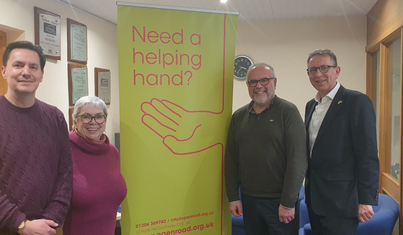The Coronavirus Business Interruption Loan Scheme (CBILS) was launched on 23rd March and has received much coverage in the press, not least about challenges businesses face in obtaining funding via the scheme.
Whilst such funding is in no doubt essential for many to trade during these unprecedented times, as ever, funding success is still very much down to the normal rigours of lending.
Under the CBILS the borrower is ultimately liable for any support received. Whilst the Government has agreed to guarantee up to 80%, this relates to any loss incurred by funders after all potential recovery sources have been exhausted and a loss crystallised. It is not simply a pawn broking against this guarantee. Applications need to show viability (pre-crisis) and the ability to repay the funding being sought.
The following notes might prove useful in securing the appropriate funding required. Ensure that your application is thorough so that any funder can understand the request and that the amount required is sufficient to cover the business’ needs so that your case can be dealt with in one application rather than you having to submit multiple requests.
What Funding Institutions will require
In short, a structured approach to the funding request to include:
- A brief understanding of the business, its activities, key people and markets. For those businesses that have used their cash balances and never required funding previously, this may need to be more detailed as the funder may not have a track record or details to fall back on. If your business has a website then include a link as this may contain a lot of the above information.
- Details of financial performance pre the current crisis. Include at least the last 2 years accounts and any latest management accounts. The key is to show the business was viable pre-crisis and worthy of support.
- Include a brief commentary of the figures covering any items that either stand out or have been one-offs. Funders look for trends and the narrative will save a number of questions.
- Within the above, cover what remuneration is taken by the directors/shareholders – salary, dividends etc. This is nothing to be ashamed of as funders will want to know what these individuals live off.
- Describe how the crisis has affected the business. Outline the mitigating actions taken to deal with the operational and financial impacts i.e. furloughing staff etc. Are there any further actions that could be taken if needed? The latter might be further contingency plans to be called upon. Have you explored all the other government initiatives that have been announced?
- Establish the financial impact on the business and what amount, length of time and type of funding is required. This will more than likely need to be evidenced by way of a cash flow forecast.
- On the cash flow forecast, we would suggest that one avoids an optimistic approach. For instance, consider any return to pre-crisis levels of trading emerging on a gradual basis. Also, receipts may take longer to materialise than previously. Commentators are indicating that the country is likely to be in a recession for some time after the crisis.
- How does the funding amount highlighted in the cash flow compare to that being sought? Consider incorporating an element of headroom to cover unforeseen circumstances. This reverts back to the underlining point of “getting it right first time” and not having to submit another application in the short term.
- It is essential that the business can afford to repay the funding being sought when it starts to return to some level of trading seen in the past. Examine the forecast cash generated relative to the proposed total debt servicing obligations. Ideally the cover should be in excess of 125%, although some lenders will consider slightly lower but it certainly needs to be higher than 100%.
- Key in any forecast is not necessarily the numbers within, but the assumptions behind them. In these unprecedented times nobody will expect anyone to predict the future, but include some commentary on your best estimate assumptions.
- The desire is to show to the funder that you have adopted the right approach, have the appropriate controls and agility to navigate through this situation.
Approach your existing Bank/Funder first
- Your existing funder will know you and will already have some of the necessary information about your business on file. They should be able to respond to your application far quicker than any new funder.
- You will still need to provide them with the information outlined above. Do not assume they know everything about your business.
- Review the lender’s website to find out the latest information on the support available and how to apply. This information is being updated regularly to provide applicants with guidance and to help access the finance required.
Away from CBILS
- Do not lose sight of other opportunities with funders. These may not unlock as much cash as a new loan may, but often the way out of a liquidity issue is found in achieving lots of small gains rather than relying on one big solution. With that in mind think about:
- Capital repayment holidays and interest roll up on your existing loans and hire purchase agreements
- Additional credit card facilities. Often a bank might already have a pre-agreed higher credit limit in place as a contingency
- A temporary increase in any overdraft limit. Explain which receipts are due to clear the temporary increased exposure
- Use any facilities that are in place and are either not fully drawn or used at all. For instance, invoice discounting, factoring, letters of credit, guarantees or forex hedging. Agree with the funder to reduce or remove limits on such facilities that might create flexibility to reallocate the credit to other facilities
- Relaxing lending formulas on working capital facilities and temporarily waiving financial covenants on loans
- Any security the current funder might release in full or in part to another funder. For instance, a funder might have a debenture in place but this may capture assets they do not place much reliance upon, such as stock or even debtors, which you might be able to use to raise finance elsewhere.
Also remember:
- Your existing funding manager is also under significant pressure, both at home and like you, will have concerns for loved ones and financial pressures. In addition, they will be adopting a new way of working at home with dramatically increased workloads arising from client demand and covering for absent colleagues. Everyone is finding out about the CBILS and how it is evolving. That does not mean that the funder doesn’t have a duty to engage properly with its clients but approaching them with some empathy and making it easy for them to help you by providing good information is invaluable.
- It can feel frustrating that the banks were given support when they needed it but might not support you now, or maybe you feel the bank’s approach to the new lending scheme doesn’t seem to match the expectation set in the initial announcements. By all means talk about your frustrations to colleagues/friends, but please get it out of your system before calling your bank. It will not help matters.
- Once you have submitted your application, check with your funding manager that everything is there to progress the request. Obtain their view on the merits of the request. They will want to submit an application that is going to be supported rather than declined.
Alternative Funders
- Now, more than previously, there are more avenues open to businesses to explore funding options. Think about who next to approach for funding if your existing lender is not inspiring you with confidence following a review of your application. One is not saying you should abandon your original choice of lender as this might involve more time and expense, but if you have any doubts then consider alternatives and type of finance required and run in tandem. It might not be the support covered within the CBILS.
- If you receive offers of support then compare terms. For instance, under CBILS, capital free repayments periods vary between funders. Banks are offering 12 months, others 6 and some funders none at all. Look at the total costs involved i.e. lending margins, arrangement fees, legal and valuation expenses plus any fees paid to third parties (brokers etc). From our experience alternative funders tend to be more expensive than your existing lender. Although cost is important, it should not be the defining measure. Rather, the amount of funding required, period of support and type of facility should be the key aspects to consider.
Please note that this is not a quick process but if you are prepared with the right information, you have a better chance of success and you are more likely to have your application processed quickly. Even if it is declined then at least you know.
External Support
- There are lots of people who will happily share advice, opinions and contacts for free and you should use your network to good effect. But it would be a false economy to try and save paying some fees if it means potentially jeopardising your chances of raising finance because you do not get the approach right, or if doing so causes you too much distraction from stabilising other aspects of your business.
- At Streets, we are helping clients with a number of applications and securing the funding required. As well as being able to assist with the preparation and importantly the presentation of the funding request, our banking team and their contacts will have knowledge of different lenders approaches to any application. Please feel free to contact your Partner or Audit or Accountancy Manager should you require any assistance.



